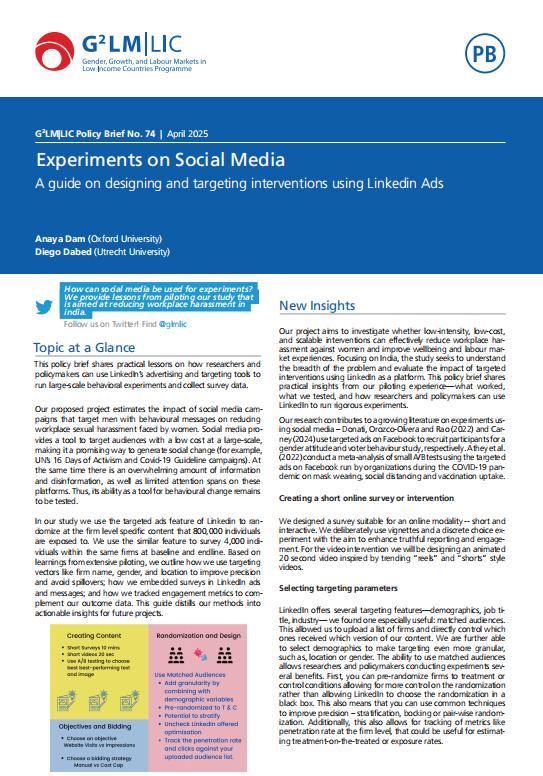This policy brief shares practical lessons on how researchers and policymakers can use LinkedIn’s advertising and targeting tools to run large-scale behavioral experiments and collect survey data.
Our proposed project estimates the impact of social media campaigns that target men with behavioural messages on reducing workplace sexual harassment faced by women. Social media provides a tool to target audiences with a low cost at a large-scale, making it a promising way to generate social change (for example, UN’s 16 Days of Activism and Covid-19 Guideline campaigns). At the same time there is an overwhelming amount of information and disinformation, as well as limited attention spans on these
platforms. Thus, its ability as a tool for behavioural change remains to be tested. In our study we use the targeted ads feature of LinkedIn to randomize at the firm level specific content that 800,000 individuals
are exposed to. We use the similar feature to survey 4,000 individuals within the same firms at baseline and endline. Based on learnings from extensive piloting, we outline how we use targeting vectors like firm name, gender, and location to improve precision and avoid spillovers; how we embedded surveys in LinkedIn ads and messages; and how we tracked engagement metrics to complement our outcome data. This guide distills our methods into actionable insights for future projects.
